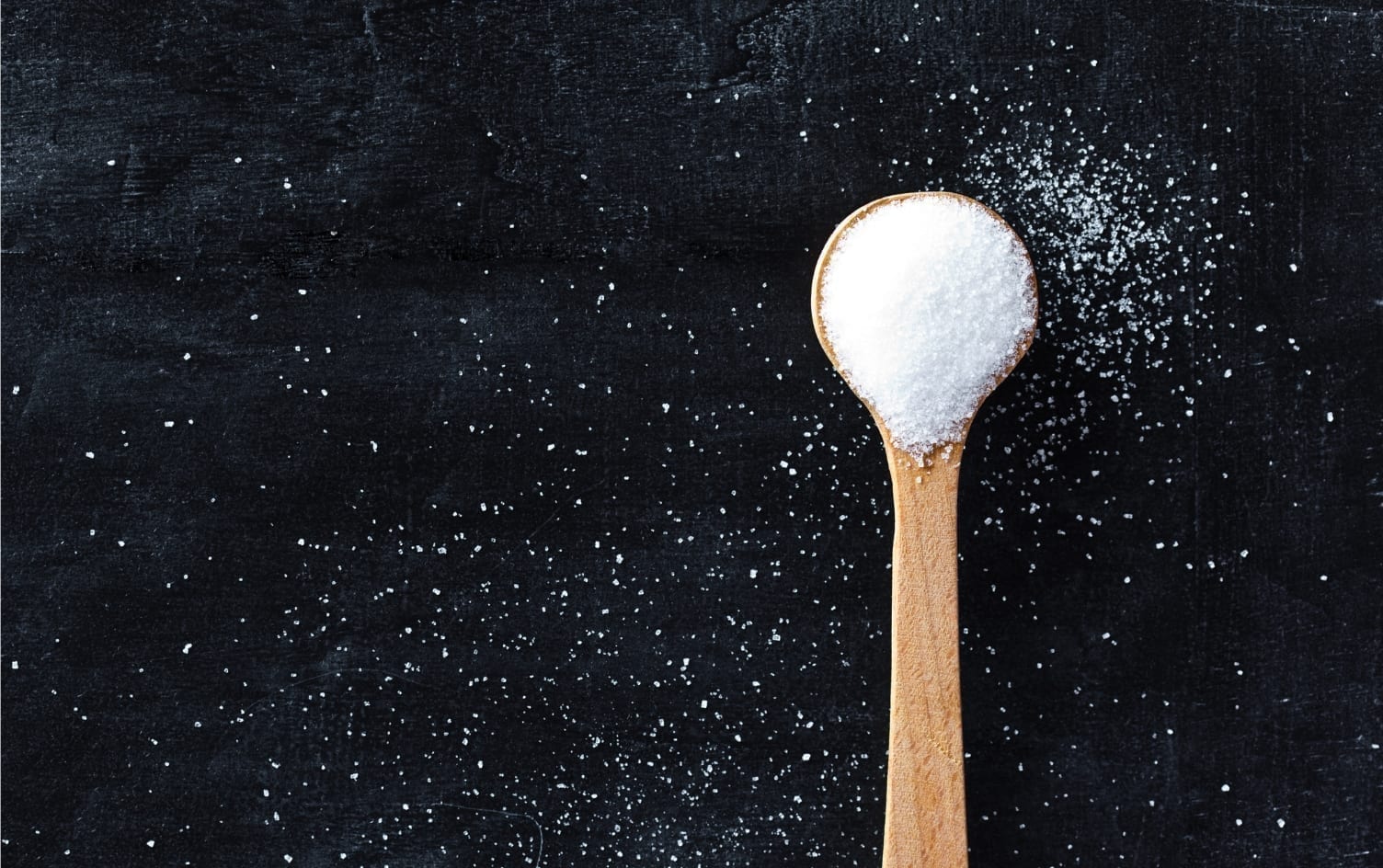Sodium is an electrolyte crucial for the body’s regulation and maintenance of normal cellular function. Specifically, sodium plays a role in regulating fluid balance along with nerve and muscle cell function. This electrolyte is consumed through food — typically in table salt, which is a combination of sodium and chloride — and it’s excreted through urine and sweat. When sodium levels are too low or too high, health problems can occur.
The recommended sodium intake for adults is to stay under 2,300mg a day, with a goal for most adults to restrict to 1,500mg each day. To get a sense of portions, 2,300mg equates to just 1 teaspoon of table salt (NaCl) each day. Adding this much salt to your diet daily may seem like a lot, however, most adults consume closer to 3,400mg a day. Research is evolving on the topic, but most health experts agree too much salt in the diet can contribute to poor health outcomes, especially cardiovascular disease. It doesn’t help that about 77% of dietary sodium comes from overly processed, poor dietary choices.
ATHLETE-SPECIFIC NEEDS
Athletes and active people typically need of more salt than the average person. Sodium is lost through sweat, and athletes can have very high sweat rates. All athletes, from crossfitters to football players to endurance runners, are prone to sweating during exercise, which is a key mechanism in cooling the body’s core temperature while working out.
The amount of sweat lost depends on many factors including body mass, temperature, clothing worn, acclimatization and gender. To know your personal sweat rate, weigh yourself before and after workout sessions. While finding your sweat rate is pretty simple, knowing how much sodium is being excreted in that sweat is something only a lab test can determine. Generally, the more sweat you lose the more sodium you are losing. Also, if you are an athlete whose skin and clothing is caked with white grit after a session, that is salt and you can consider yourself a salty sweater.
Sweat can contain anywhere from 500–2,400mg of sodium per liter and athletes have been reported to lose up to 8,000mg per hour during intense workouts. This is an extremely variable amount and makes precise sodium recommendations for athletes difficult. Generally, untrained individuals lose more sodium through sweat than trained athletes and men lose more than women. Also, studies have shown tennis and football players have some of the highest sodium sweat rates.
Athletes who lose too much salt through sweat without properly replenishing the electrolyte are at risk for muscle cramps. This is one reason electrolyte beverages should be consumed throughout training sessions. Athletes who do not replace sodium losses are also at risk for poor recovery, especially when completing high-volume, back-to-back training sessions.
In extreme cases, hyponatremia can occur. This is a potentially life-threatening condition leading to swelling, nausea, vomiting, confusion and loss of consciousness. This occurs when sodium losses are too great either through sweat losses or brought on by excessively drinking plain water during training, diluting the sodium levels in your blood. A few early symptoms of not getting adequate sodium may be weight gain or swelling during the session, feeling confused or cramping. Unfortunately, many other conditions share these same symptoms. Even hypernatremia, or very high sodium blood levels in relation to body water, which is typically caused by severe dehydration, can present with several of the same symptoms. Taking note of these symptoms can alert you to potential problems in your athletic fueling plan.
STRATEGIES FOR ADDING SALT SAFELY
While the active population generally can safely get away with extra salt in the diet, they are not completely immune to adverse effects of chronically over-consuming sodium. Increased intake should be done in a thoughtful way that works to promote both performance and general health.
To do this, focus on adding sodium during workouts and using the salt shaker liberally on your healthy homemade meals. Even athletes requiring more sodium should limit processed, poor-quality food choices to preserve general health. It is important to realistically consider how active you are, training conditions, current health status and how much you sweat during workouts to determine if you need more sodium than the general guidelines call for.
Consulting a physician and dietitian is a good starting point for more specific, individualized recommendations.
How to get enough sodium:
- Use the salt shaker on your healthy meals outside of training.
- Add broth or soup to meals.
- Try fueling activities with roasted, salted potatoes.
- Add a pinch of salt to PBJ sandwiches, oats, energy bites, etc.
- Snack on salted nuts, quality jerky, pretzels, olives and pickles.
- Add low- or no-calorie electrolyte mixes to water consumed throughout the day.
- Replenish post-workout with V8.
- Look for sports drinks with higher sodium counts, ~500mg/serving.
- Take in salted sport food and drink throughout training sessions.
- Salt tablets might be appropriate in some situations.
- For hot, long events, limit over-hydrating with plain water.




